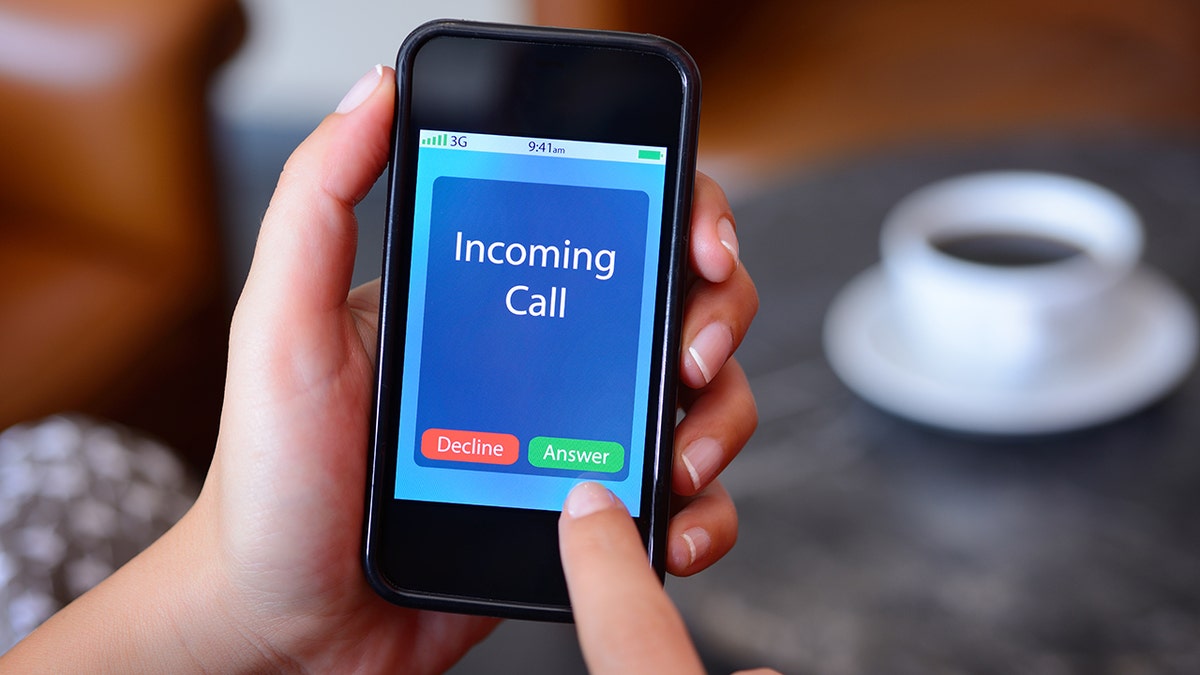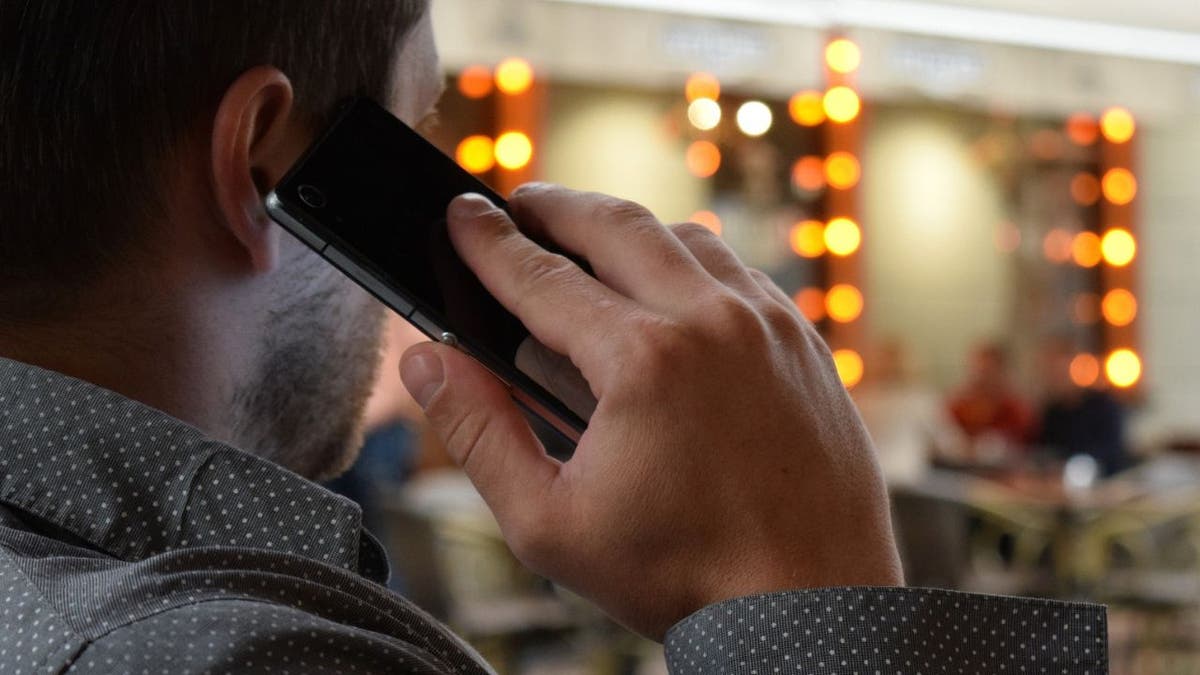Most creepy iPhone setting needs to be adjusted
Find out how to shut off this invasive feature that you may not know exists. Kurt "The CyberGuy" Knutsson reports.
Nothing is more disturbing than answering your phone only to be greeted by an automated recording informing you that there is a warrant out for your arrest and that you owe the government thousands of dollars in back taxes.
This message is not actually from the government. It is just one of the many illegal robocalls aiming to steal your money or personal information like your social security number. Even worse, these despicable scammers target older Americans and those more susceptible to their con game.

Nothing is more disturbing than answering your phone only to be greeted by an automated recording informing you that there is a warrant out for your arrest and that you owe the government thousands of dollars in back taxes. (Wodicka/ullstein bild via Getty Images, File)
The good news is robocalls are on the decline, primarily helped by the FCC taking an important step in fighting robocalls by requiring phone providers to implement STIR/SHAKEN. What is that, you ask?
STIR/SHAKEN is an industry-standard caller ID authentication technology, which is a set of technical standards and protocols that allow for the authentication and verification of caller ID information for calls carried over Internet Protocol, or IP, networks.
HOW TO TELL IF YOUR CELL PHONE HAS BEEN SECRETLY HIJACKED
While this proved largely effective, seeing many people receive calls labeled as "SPAM" or "SCAM LIKELY," scammers seem to be working their way around several voice service providers using analog instead of digital technology.
Tips to protect your privacy and avoid being scammed over the phone

Most carriers now have a way of identifying robocalls by identifying them as "Spam Risk" or the like. (iStock, File)
Don't recognize the number - Don't pick up
Simple as this sounds, this is the easiest way of avoiding a potentially dangerous call. Most carriers now have a way of identifying robocalls by identifying them as "Spam Risk" or the like. Another way they try to get you is by using your local area code, sometimes even the first three digits of your or a family member's phone number, to entice you to answer. Making it all the more important for you to take an extra careful look at the number on your screen.
Block numbers in your phone settings
Another way around this is by blocking unknown phone numbers in your phone settings.
For iPhone users: To silence unknown callers:
- Tap Settings
- Tap Phone
- Tap Silence Unknown Callers
- Then toggle to turn it on - it will turn green
- If a 911 call is placed, this feature is disabled for 24 hours so that emergency calls to you can ring through.
HOW TO TELL IF SOMEONE IS SNOOPING ON YOUR ANDROID
For Android users: To silence unknown callers:
- Tap Settings
- Tap Block numbers
- Turn on the Block Unknown Callers feature.
*Settings may vary depending on your Android phone's manufacturer.
One thing that is important to remember should you use this feature is that it not only blocks potential SPAM callers, but it also blocks any unknown phone number you have never called or texted. So you might want to think twice about enabling this if you're expecting a call from someone from whom you haven't received a call or text.

One thing that is important to remember should you use this feature is that it not only blocks potential SPAM callers, but it also blocks any unknown phone number you have never called or texted. (Kurt Knutsson)
Manually block numbers from spam robocalls
Should an unknown number have called you and not left a voice message, it's more than likely it was a robocall. While other robocalls go directly to voicemail with a threatening or enticing message, urging those truly vulnerable to act fast. Either way, you can manually block these numbers on an iPhone by:
- Tapping the unknown number
- Scroll down on your screen and tap "Block This Caller"
- Tap "Block Contact".
HOW TO KNOW IF YOUR IPHONE IS LISTENING TO YOU
Use your wireless carrier's free spam and robocall-blocking service
Several wireless carriers provide their own free robocall scanning and blocking services. Among them:
- AT&T Call Protect - available for iPhones and Androids, lets customers manually block unwanted calls and labels suspected robocalls as a "spam risk," as well as making efforts to prevent unwanted calls from reaching you.
- Sprint/T-Mobile - Scam Shield- an app that labels all potentially dangerous calls as "Scam likely" and opens free controls for several anti-scam protections, including Scam ID, Scam Block, and Caller ID. Additionally, the app also provides you with a second phone number for use instead of your private one, ideal for online shopping and helping you avoid calls from scammers as well as telemarketers.
- Verizon Call Filter app - helps protect you from unwanted calls and lets you decide who can reach you. Call Filter also detects spam and blocks high-risk spam calls by forwarding them to voicemail.
Third-party spam-blocking apps
Several third-party apps can help protect you from scam artists. Among our most recommended include:
- RoboKiller is an app that claims to reduce 99% of unwanted calls or texts. The app is not free for iPhone and Android users. However, it comes with a 7-day free trial, which might be worth checking out before investing.
- Call Control is an app currently only available to Android users; the app helps you filter out unwanted callers by manually adding them to a blacklist.
- Nomorobo For those of you who still have a landline, thanks to a package deal with your internet providers, this app help prevent robocalls from reaching you both at home and on the go. Currently free for VolP landlines, the basic mobile package currently starts at $1.99 a month.
A voice provider blocked from the entire U.S. phone network
In a somewhat unprecedented move, the FCC effectively blocked Global UC from the entire U.S. phone network. Global UC provides low-cost, international calling services to over 200 businesses internationally. However, in an order released on Nov. 22, FCC reported that Global UC has failed to comply with several regulations to control robocalls in the U.S. As a result, by failing to implement caller ID verification technology or giving the FCC explanations on its current attempts to fight robocalls. Global UC has, intentionally or not, allowed robocall scammers to make calls through their system and has profited from them.
HOW TO GET A FREE SECOND PHONE NUMBER AND STOP ANNOYING CALLS
In addition, the order went on to say that while Global UC certified that they had implemented the above-mentioned STIR/SHAKEN technology, the document they provided only featured a description of STIR/SHAKEN, and included no actual information about how they intended to use it, or any robocall mitigation plan.
As a result, Global UC is no longer part of the Robocalls Mitigation database, and other carriers are now forbidden to accept traffic from them.
A notable first for the FCC
After several notable threats to phone service providers for failure to comply, this is the first time the government has formally blocked a voice provider, marking a hopeful sign of bringing spam robocalls to an end. With the order preventing providers from accepting phone traffic from Global UC, the move could be hugely detrimental to their business, as they rely on sending calls to other networks to turn a profit.
HOW TO CHANGE YOUR PRIVACY SETTINGS ON YOUR ANDROID DEVICES
Have you had success combating robocallers? Comment below.
For more of my Privacy tips, subscribe to my free CyberGuy Report Newsletter by clicking the "Free newsletter" link at the top of my website.
CLICK HERE TO GET THE FOX NEWS APP
Copyright 2023 CyberGuy.com. All rights reserved. CyberGuy.com articles and content may contain affiliate links that earn a commission when purchases are made.





















